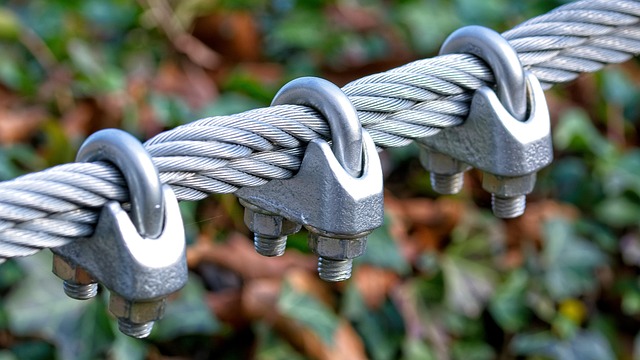Strategic internal linking, facilitated by plugins, enhances site navigation for users and search engines. These tools automate link creation, ensure contextually relevant anchor text, and improve crawlability. By implementing optimal link structures, SEO specialists boost user experience, page authority, and rankings, ultimately driving organic traffic and improving search engine visibility.
“Elevate your technical SEO strategy with innovative approaches to internal linking, designed for scalability. This comprehensive guide explores effective methods to optimize your site’s architecture using powerful internal link structure plugins. Learn how to streamline navigation, enhance user experience, and boost search engine visibility. From unlocking scalable solutions to implementing best practices, discover strategies that ensure consistent, efficient, and impactful internal linking—all tailored for SEO specialists seeking cutting-edge advantages.”
- Unlocking Scalability: Internal Link Structure Solutions
- Technical SEO's Guide to Efficient Internal Linking
- Plugin Power: Optimizing Link Structures Internally
- Strategies for Consistent and Effective Internal Links
- Enhancing Visibility: Link Structure Best Practices
- Streamlining Your Site: Scalable Internal Link Approach
Unlocking Scalability: Internal Link Structure Solutions

Unlocking scalability in technical SEO requires a strategic approach to internal linking, especially as sites grow and content expands. Many specialists turn to powerful tools like an internal link structure plugin to streamline this process. These plugins offer efficient methods to create and manage intricate network architectures, ensuring every page is accessible and relevant.
By implementing a robust internal link strategy, SEO practitioners can enhance site navigation for both users and search engines. This involves careful planning and execution, from identifying key target pages to naturally integrating links within content using a tutorial-like approach that guides readers seamlessly across the website. An effective internal link structure strategy not only boosts user experience but also improves page authority, enabling better search engine rankings.
Technical SEO's Guide to Efficient Internal Linking

Technical SEO specialists are always on the lookout for efficient and scalable methods to optimize their website’s internal linking. A well-structured internal link strategy is crucial for enhancing user experience, improving crawlability, and boosting search engine rankings. An internal link structure plugin can be a game-changer in this regard, offering tools to automate and streamline the process of creating and managing links within your site’s content.
By utilizing an internal link structure plugin, SEO professionals can easily implement best practices such as contextually relevant anchor text, optimal link placement, and broken link checking. This ensures that every internal link contributes positively to the overall SEO of the website. Furthermore, these plugins provide insights into link metrics, allowing specialists to identify high-value pages and content clusters, which can be further optimized through targeted internal linking strategies. An internal link structure tutorial or guide from reputable sources can serve as a valuable resource for learning how to leverage these plugins effectively for optimal internal link structure optimization.
Plugin Power: Optimizing Link Structures Internally

In today’s digital landscape, a robust internal link structure is vital for any website aiming to excel in search engine optimization (SEO). This is where plugins step in as powerful tools for technical SEO specialists. With an array of dedicated internal link structure plugins available, optimizing your site’s navigation becomes more accessible and scalable. These plugins offer sophisticated features that go beyond simple text linking; they enable dynamic generation of links based on content relevance and user behavior.
By leveraging plugin power, you can implement advanced internal link structure tips such as contextual anchor texts, automated link building, and smart redirection strategies. This ensures your website not only adheres to best practices for internal link structure tutorial but also enhances user experience. The end result is a more connected, crawlable, and SEO-friendly site—a true game-changer in the competitive world of search engine rankings.
Strategies for Consistent and Effective Internal Links

Creating a consistent and effective internal linking strategy is essential for any website aiming to improve its search engine optimization (SEO). By implementing structured internal links, technical SEO specialists can enhance user experience while also boosting their site’s visibility. One powerful tool in their arsenal is an internal link structure plugin, which streamlines the process of creating and managing these vital connections. These plugins often come with intuitive interfaces that allow for easy identification of key pages to link to, ensuring a strategic distribution across your site’s architecture.
A well-planned internal link structure tutorial involves understanding your target audience and their information needs. This means strategically placing internal links within relevant content to guide users towards valuable resources. For instance, using internal link structure tips such as anchor text that accurately reflects the linked page’s content and ensuring a natural flow of connections can significantly impact SEO performance. A balanced approach, where internal linking is seamless yet purposeful, allows visitors to navigate effortlessly while search engines understand your site’s hierarchy, ultimately driving better rankings and increased organic traffic.
Enhancing Visibility: Link Structure Best Practices

A well-crafted internal link structure is a cornerstone of any robust technical SEO strategy. By strategically placing and organizing internal links, you can significantly enhance your site’s visibility to search engines. An optimal internal link structure plugin should aim to create a logical hierarchy that guides users and search algorithm crawlers through the website seamlessly. This involves linking to relevant pages within your site, ensuring each page has a clear and unique purpose while contributing to the overall authority of your domain.
When building an effective internal link strategy, consider a tutorial approach that aligns with your site’s information architecture. Identify key topics and create comprehensive guides or resources that interlink related content. This strategic placement not only improves user experience but also reinforces the relevance of your pages to specific search queries, boosting your internal link structure SEO. Remember, a well-optimized internal link structure can drive more traffic, reduce bounce rates, and ultimately elevate your website’s ranking potential.
Streamlining Your Site: Scalable Internal Link Approach

In today’s digital landscape, streamlining your site’s architecture is vital for both user experience and search engine optimization (SEO). A well-structured internal link strategy forms the backbone of a robust SEO campaign, especially as your website scales. By implementing an effective internal link structure plugin, you can automate and optimize this process, ensuring every page is connected seamlessly. This approach simplifies navigation for visitors while also enabling search engines to crawl and index your content more efficiently.
A scalable internal link structure strategy involves carefully curating anchor text, contextual placement, and strategic depth. Using plugins that offer advanced features like smart linking suggestions and automatic content mapping can save specialists valuable time. These tools facilitate the creation of a internal link structure tutorial-driven network that boosts page authority and improves overall site performance. With such methods, you can maintain a clean, logical hierarchy as your website grows, ultimately enhancing its SEO potential.
